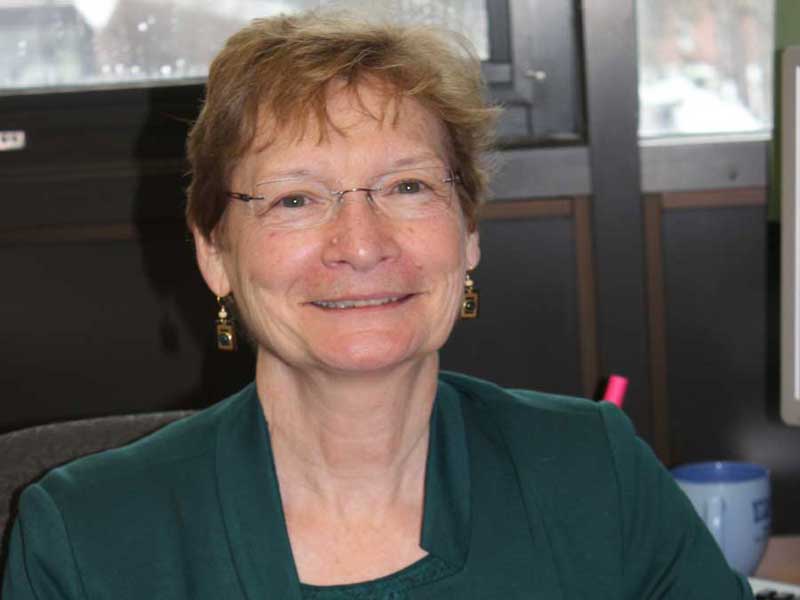Dolci and students study asbestos mine site, present at conference
Liz Dolci
JSC Professor and Chair of Environmental and Health Sciences Elizabeth Dolci traveled with students to the American Society of Microbiology during the 2014 summer; the team didn’t go simply to observe.
Dolci has been studying the microbial communities in the Vermont Asbestos Group mine for years. The site consists of 1540 acres and is remnant of a mine and mill that lasted from the early 1900’s to its closing in ’93. It stretches across Belvidere Mountain, and within the towns of Eden and Lowell, Vt. Its contents weigh between 29-30 tons.
The site has been controversial over the years. “The environmental impact of the mine reaches beyond the boundaries of the mine,” said Erika English, a recent JSC grad who joined Dolci in Boston. “In the past there have been issues with erosion of mine tailings into public and private waterways. This has the potential to affect humans.”
Docli and her team shared their findings at the event; they impressed and inspired fellow scientists and received much praise. “Several scientists from other institutions commented on the level of professionalism demonstrated by our students. They were surprised to hear the students were undergraduates,” said Dolci.
English continues to work on this project as a full-time lab technician in Dolci’s lab. “In short, the presentation included our findings on the profile of the bacterial communities (who’s living there) of several human-impacted aquatic locations within the mine site,” said English in an e-mail interview.
“To explore the environmental impact from a microscopic perspective is a very different approach to looking at what is happening in this area where aquatic environmental conditions are highlighted by a combination of stressors including metals, arsenic, and an alkaline pH. By exploring the base of the ecosystem we can use this to inform what may be happening at other levels of the system,” she said.
“With the combination of metals, arsenic, asbestos and a high pH, there was a possibility of finding extremophiles,” said English. “We did not, however, expect to find the range of extremophiles that were present. We identified . . . bacteria that have mechanisms for heavy metal sequestration, and bacteria resistant to radiation and desiccation. We found fish and plant pathogens. This was presented by outlining the bacterial community that was revealed through each of two methodologies, one method dependent on culturing and one culture-independent.
Shayna Bennet, Eliza Chevalier, and Hannah Sargent also joined Dolci in presenting at the conference.
The conference provided the hard working team with the opportunity to network. “The conference was an amazing opportunity to discuss with professionals some of the hurdles and challenges of the research and also to share ideas and successes,” said English.
“There were people curious about the bioinformatics work we used to achieve identity of the community individuals, there were people who wanted to share their knowledge about the most successful ways they were able to achieve bacterial community information, and there was one team that was very excited to see a bacterial community profile they had outlined from a different type of mine with similar conditions was very similar to ours,” she said.
Dolci and her team continue to work on the project. “Our work since the conference has been focused on looking at microbial adaptation to a human-impacted environment, presence of antibiotic resistance among bacteria isolated from the mine, and changes in gene expression . . . in response to exposure to mine tailings run-off,” said English. “We also have completed data collection for an investigation of the pit pond water column to further inform us of the bacterial community composition at various depths of the water body . . . The results are currently being analyzed. [These] projects are still in progress and will allow us to make some statements about the environment on a larger scale as the projects continue.”
English first heard about the mine during a 2010 thesis presentation by former JSC students. She was blown away, and four years later she is still working on the project. “I remain enticed with this research and driven to continue contributing to the discoveries that lie ahead,” said English.
Travis LeClair joined the Basement Medicine staff in Spring 2014, assuming the position of staff reporter.
Kayla served as a general assignment reporter and photographer for the spring 2013 semester. She returned for the Fall 2013 and spring 2014 semesters...




